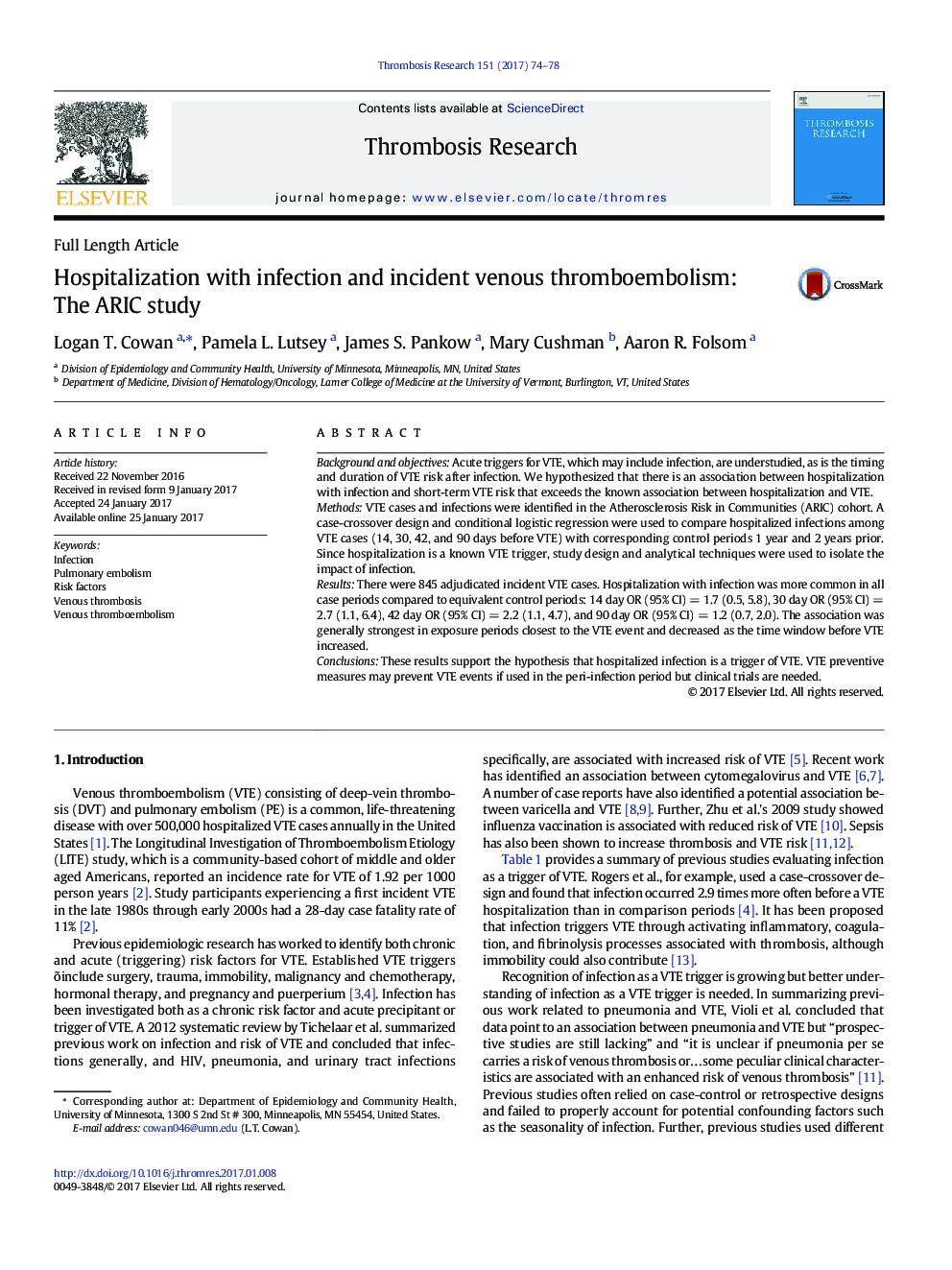| Article ID | Journal | Published Year | Pages | File Type |
|---|---|---|---|---|
| 5622053 | Thrombosis Research | 2017 | 5 Pages |
â¢Hospitalized infection appears to trigger VTE events.â¢The triggering effect of infection on VTE decreases over time after an infection.â¢VTE preventive measures may prevent VTE events in the peri-infection period.â¢Hospitalized patients with an infection may be considered for VTE prophylaxis.
Background and objectivesAcute triggers for VTE, which may include infection, are understudied, as is the timing and duration of VTE risk after infection. We hypothesized that there is an association between hospitalization with infection and short-term VTE risk that exceeds the known association between hospitalization and VTE.MethodsVTE cases and infections were identified in the Atherosclerosis Risk in Communities (ARIC) cohort. A case-crossover design and conditional logistic regression were used to compare hospitalized infections among VTE cases (14, 30, 42, and 90Â days before VTE) with corresponding control periods 1Â year and 2Â years prior. Since hospitalization is a known VTE trigger, study design and analytical techniques were used to isolate the impact of infection.ResultsThere were 845 adjudicated incident VTE cases. Hospitalization with infection was more common in all case periods compared to equivalent control periods: 14Â day OR (95% CI)Â =Â 1.7 (0.5, 5.8), 30Â day OR (95% CI)Â =Â 2.7 (1.1, 6.4), 42Â day OR (95% CI)Â =Â 2.2 (1.1, 4.7), and 90Â day OR (95% CI)Â =Â 1.2 (0.7, 2.0). The association was generally strongest in exposure periods closest to the VTE event and decreased as the time window before VTE increased.ConclusionsThese results support the hypothesis that hospitalized infection is a trigger of VTE. VTE preventive measures may prevent VTE events if used in the peri-infection period but clinical trials are needed.
